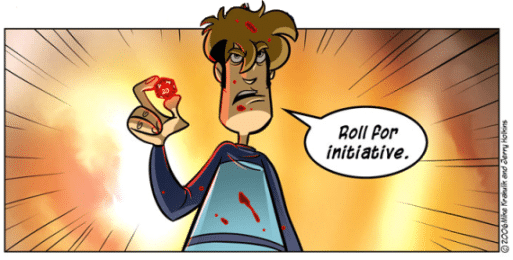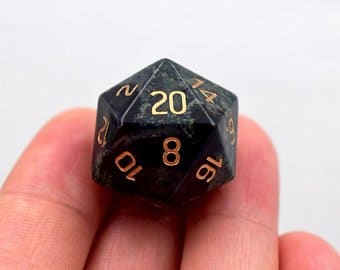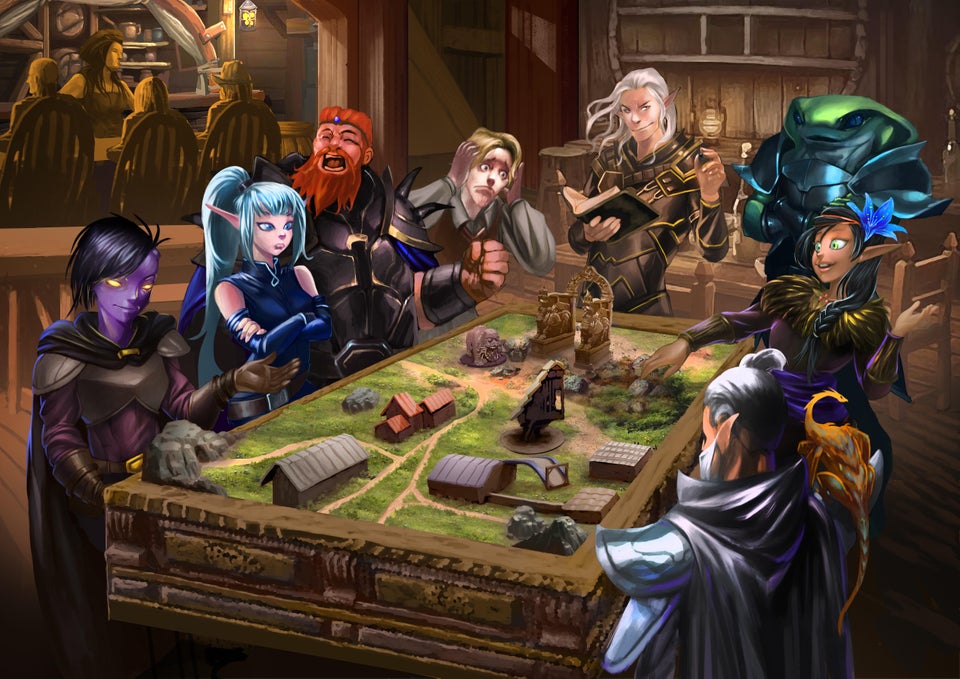Today I was talking to this guy at Barnes and Nobles about Dungeon and Dragons, let’s call him Tim. Really cool guy with an interesting story, but as time went on, we got on the subject to talk about D&D house rules. He stated a few I was not aware of and I did likewise. After that conversation, I got thinking about what are all the D&D house rules that existed. Well, after hours of perusing the internet and even asking Reddit users, I think I found my 7 favorites and want to share them with you. Now, let us begin.
D&D House Rules: Hit points
I think I found the house rule category that has the largest amount of options to choose from. It also has the best to ensure no one is disappointed when leveling up. The official rule for dungeons and dragons is to roll a hit die whenever you level up. From there, you add your constitution modifier to the roll. What you rolled is the number of hit points you will get to add your current amount. It is a solid way to ensure your character gains health, but still, people always desire something else to this rule. Which leads us to the question, what are some of the D&D house rules for hit points?
1. Hit Points: Roll 1 Just Take Average
The first house rule many players use is to reroll if when rolling hit dice you roll a 1. The reason many people like this rule is for one reason, it can be disheartening going from 25 hit points to 26 hit points. Another hidden reason behind it is that on the chance one of your characters has a negative con and rolls a one. Then, they are not even gaining hit points but potentially losing health by leveling up.
I have only ever seen it happen once in 3.5 edition. A sorcerer had a 6 constitution and rolled a 1 when leveling up to level 2. He then went from 2 hit points to 1 hit points by leveling up. Meanwhile, our barbarian who had a 16 constitution rolled a 12. He went from a 15 hp to a 30hp. After that our sorcerer decided to ask our DM if he could one re-roll and two switch his intelligence stat of 12 with his constitution. Which he more than happily agreed to the D&D house rule of re-rolling ones as well as the notion, that no one should ever have a negative constitution. Even for roleplay.

2. Hit points: Roll Or Take The Average
The next D&D house rule for hit points is declaring if you are rolling your hit die when leveling up, or just taking the average beforehand. What this serves to do is allow those who want to risk rolling the lowest or highest to roll. Meanwhile, those who want to play it safe can just take the average.
Now if you are smart, you are going to take the average and here is why. The actual average for any hit die roll is going to end in a point 5. So, if you have a fighter whose hit die is 10, his actual average is 5.5. However, you cannot have half a hit point, so “Wizards of the Coast” stated the average is 6 for a D10 hit die. What this serves to do is actually make you above average on your hit points. Which means, if you take the “average”, you are guaranteed to actually be above average and outclass anyone else who rolls their hp to level 20.
So, be warned DM’s! If you want to do this rule it can be gamed slightly. But in all honesty, it is nothing huge as it roughly translates to an extra 10 hit points over the long run. That said, still, something that should be noted.
3. Hit Points: Advantage
If you are in a campaign with this D&D house rule, you are in the presence of a merciful god. This one is you roll at advantage when rolling hit points. Meaning, if you are rolling a D10 for hit points, roll twice and take the highest. This changes your odds from only having a 10% chance of rolling max hit points to a 19% chance. Or, if you are really lucky and use a d6, a 17% chance to a 28% chance of having max hit points.
This also drastically decreases your chances of rolling lowest hit points, as you would have a 1% chance of rolling a 1 twice in a row with a d10, and only a 3% chance with a d6. So, if you wanted to almost guarantee your party does not have anyone roll minimum hit points, then this would be the one to go. As well as, if you are a DM that likes to throw the kitchen sink at players, this might be a good one to reduce perma-deaths in your campaign.
D&D house rules: Initiative
Ah yes, initiative. The one thing that is always guaranteed to start a fight. Standard rules have you roll a d20 and add your dexterity. Then the person who rolled the highest goes first. If there is a tie, then the one with the higher dexterity goes first. A rather simple rule but there are actually a few interesting D&D house rules that are worth commenting on.

4. Initiative: Nat 20/Nat 1
The number of times I have heard “I just wasted a natural 20 on initiative, that sucks.” Have been said way too many times. Now I believe a natural 20 is something important no matter what. After all, going first is great for anyone as they can set up the board and control the field.
That said, this D&D house rule is great for those that seek to make it feel more rewarding. In this scenario, if someone rolls a Natural 20, then their first attack roll has advantage on their turn. But, if it is a natural 1, they have disadvantage. It is a really rewarding concept that adds some intensity behind your initiative role as everyone loves advantage and everyone hates disadvantage.
5. Initiative: Surprise Rounds
It is a common thought that there is effectively no such thing as a surprise round in 5e Dungeons and Dragons. The reason being, it is almost impossible to get surprise rounds for a few reasons. One, everyone has to beat the enemy’s highest passive perception. This means, your fighter who has disadvantage and a -1 stealth needs to beat your enemy’s passive perception for anyone to get a surprise round. Then, everyone rolls initiative, you need to beat the enemy’s initiative as they are no longer considered surprised once their turn goes down.
To combat these disadvantages, a few DM’s decided to get together and make a new way to run surprise. It still requires a few rules behind it but still useful. The first rule is the enemy needs no reason to believe you are there. Meaning if the enemy had no reason to expect you until the fighter fails his stealth check, but the rogue does not. The fighter does not get surprise, but the rogue does.
Afterward, those who have been deemed a surprise round act separately of everyone else first. They will do their full rounds of attacks they want to do, and then you roll initiative to see the order everyone goes in. It’s still complicated but is pretty popular among DM’s who have players always trying to get a surprise round.
Initiative: Surprise Round Review
It is an interesting idea as I have never played it before, so I and a few friends decided to test the rule and see how it worked. The first thing we noted, was that we had trouble figuring out who got the surprise round. After that, it was a little disappointing for the other players hearing what everyone else was doing why they had to wait until they went. Then, the final thing noted was for the most part the surprise round put us in favor in the fight but did not make a huge difference to anyone but the assassin.
Therefore, after taking our playtest into account, I would say that for the most part surprise rounds just are not a big thing for anyone but the assassin rogue. After that, if you are DM, I say to consider this rule, only if surprise rounds are a popular demand or question among your adventuring group as this is a complicated rule that takes some time to do.
Finally, I would say to take a look at this D&D house rule if you are really good at keeping track of combat rounds. We ran the test run three times and in one had the enemies do it on us. We noticed most of them, but their reinforcements came in under stealth. We then had to stop combat and let the reinforcements do their turn. It pushed the fight in their advantage, but we still won. That said, it was annoying and slowed down combat whenever we did this. So, there is my evaluation on this house rule, use it if you want, but be warned it can get complicated.

D&D House Rules: Nat 20’s
Ah, the elusive, rare, and beautiful natural 20. There is nothing quite like rolling a natural 20, the joy and happiness are better than any other drug out there. And no, I am not addicted to rolling D20’s for your information.
That said there are a lot of variant D&D house rules on rolling natural 20’s. So much so, that I would need to write a book to tell them all. So instead we are going to go over two that really intrigues me.
Nat 20’s: Insta-kill
This one was really intriguing to me and was one Tim mentioned to me. The first part runs the same as a regular natural 20, you deal double damage. However, there is a second part which is where it gets fun. Once, you roll one natural 20, you roll again, if you roll another natural 20, you deal triple damage. Then, if that happens, you roll another D20, if you roll a third natural 20 in a row, then you instantly kill whoever you were hitting.
It was a really cool idea to think about and run some stats on. The first thing to notice is that this is crack. It now transforms an already fun event into an extraordinary moment as you wait and see if your teammates can do even more damage or even end the encounter. Now, this obviously favors those who can attack multiple times such as the fighter, or warlock with Eldritch Blast. So a DM should be warned, as your campaign ending boss has a chance to be one shot. Extremely rare, but still a chance. And the same can be said for you hitting your players. So, make sure your party is okay with this before implementing.
Nat 20’s: Insta-kill Statistics.
Before I move on to the next D&D house rule, I wanted to go over the statistics for anyone wondering about this. It’s not much but it might settle some people’s minds knowing the odds. The first thing to notice is that rolling one natural 20 has a 5% chance. Therefore, to roll another nat 20, you have only a .25% chance.
This means 1 out of 400 times will the DM or a player rolls two natural 20’s in a row. This is also assuming all dice rolls are only used in combat. Then, the odds of rolling 3 natural 20’s in a row are .01%. This means, if your adventurers are fighting the BBEG, only one in 8000 tries will they instakill him in one hit. A small odd that can potentially add more fun to combat for both sides in my opinion.
7. Nat 20’s: Auto Success
This one is extremely popular. So much so, that many just believe it to be an official rule. In reality, though, it is not. So, what is this unofficial D&D house rule? Basically, if you roll a natural 20 for anything be skill related or attack-related it is an auto success. This means, if the DC is 30, and your player rolls a natural 20, then it automatically works. It can break the reality of the game but also has the chance to create some really awesome moments. Much like a gnome beating a giant at arm wrestling.
For this D&D house rule, I would say to use your circumstances to decide on if that happens. For instance, if it can be believable and possible, then I would let a natural 20 be an automatic success. If, however, you are trying to roll a persuasion check to convince the pit fiend to switch his alignment to good? Then even if it is a natural 20, I would not let it happen unless they can beat a DC I come up with. This way there are no attempts to be game breaking auto success, but you can still have fun with crazy events.
D&D house Rules: Conclusion
This concludes seven of the most popular D&D house rules if you want to see more of these rules or even house rule mechanics. Let me know and I will do my best to compile some more of them. I am really intrigued by the luck mechanic myself. If you liked my review on these rules, then I highly encourage you to check out my “Best wizard spells of 5e we don’t think about.” It has really been popular among my readers and I am really proud of that one as it goes into some of the nitty gritty of spell casting and their rules. Anyways, hope you have a phenomenal day and hey, keep on rolling!
- P.S. If you enjoyed this post and others like this, subscribe to my Patreon and help decide on what content will be released as well as get exclusive posts only available to subscribers with all charts used included!


Very interesting!